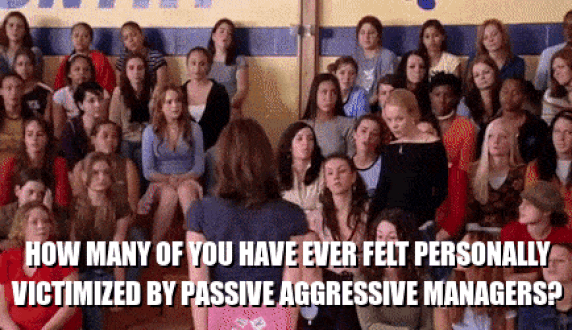
For some time, I’ve been looking for one “source” that curates modern takes on HR Tech, perspectives from the people who build it, and its impact on enterprise — something that’s tailor-made by professionals for decision-makers.
I never found it — so I decided to build it.
Every week, I’ll be sharing fresh insights on tech platforms, design, data, and the future of work — straight to your inbox.
My Thoughts
Every action has an equal opposite reaction. Though, this time, the opposite reaction is detrimental to morale and often illegal. That’s right — we’re talking about quiet firing. 🔥
Like quiet quitting, quiet firing is not a new phenomenon. The act is simply getting its moment in the spotlight as we continue the post-pandemic reckoning of the workplace. 🌟 Unlike its ungrudging counterpart, quiet firing is an act in which a manager pushes an employee to quit by creating a hostile work environment through passive-aggressive abuses of authority.
I may not even need to define quiet firing for you. According to a LinkedIn News poll, more than 80% of 20,000 respondents reported experiencing it firsthand or seeing it happen to a coworker. 😬

Demoralizing even a single employee is so obviously inexcusable that I considered choosing a different topic to discuss this week. But I know it’s possible that someone who reads Exit Interview may be struggling in a company with a boss who is quietly firing them as I write this. ✍️ Even if they’ve heard of quiet firing, they may not know it’s happening to them. After all, quiet firing has persisted because it’s rooted in passive-aggressive behavior, which is notoriously hard to prove and discipline in the workplace.
If you’re unhappy in your job, I encourage you to read this piece from a fellow Forbes contributor. If these situations sound a little too familiar, it may be time for a change. 🫂
Tech Innovation At Work
Young fintech company DailyPay recently rolled out the latest offering in payroll technology: Friday — and employees are in love. 💚 The mobile app plus reloadable prepaid card allows staff whose employers use the company’s self-titled platform to access earned pay before payday and with zero fees. 💰 Recent studies have reported that 79% of Americans and more than 60% of Gen Z workers want the ability to get paid daily for their work. While that statistic accounts for workers in a wide income range, DailyPay executives say that on-demand pay and earned wage access (EWA) programs are particularly beneficial to low-income workers and those living paycheck-to-paycheck. 💸 🔄 💸 DailyPay SVP Ron Munkittrick says low-income workers suffer financial hardships, “whether it’s because of bank fees, late fees or having to go to payday lenders.” With relatively few employers offering an EWA program, organizations can gain a competitive edge in the hunt for talent, especially with younger demographics. However, like many emerging financial trends, on-demand pay has sparked conversations over regulations and consumer protections — specifically whether EWA programs should be considered loans.

Global research firm McKinsey 🌎 has released their 2022 Technology Trends Outlook report, an annual overview of the most important digital advances shaping business and humanity. Here are a few of the highlights from the 250+ pages of research:
- Web3, immersive-reality technologies, the future of mobility, and the future of space technologies were added to this year’s lineup of 14 trends. Next-level process automation and next-generation materials got the boot.
- Applied AI took home the title of top emerging trend. 🤖
- Clean-energy solutions, though ranking third, maintained low innovation and adoption scores. It did, however, have the highest interest level of all topics.
- Though Web3 was concluded to have incredibly high levels of interest and investment, adoption and innovation rates remain incredibly low due to a lack of consumer understanding and minimal research.
- Use cases for Wi-Fi 6 and 5G cited for this study estimate a $2 trillion global GDP impact due to advanced connectivity. 📶
Though lengthy, the study is well-organized. Check it out here. 👈
The Changing Workplace
Harvard Business Review 🏛️ has tapped into its several decades of research in leadership and organizational culture to shed more light on quiet quitting. More specifically, what the relationship between a manager and a direct report who is quietly quitting looks like, and what it’s missing compared to an employee who willingly offers up “discretionary effort” (HBR’s term for the rate at which employees are willing to “go the extra mile”)? Any way you slice it, the answer is clear: bad managers — not lazy workers — are almost always the driving force of quiet quitting behavior. 🤫
The workplace is changing, but some things, like IT problems, will likely always stay the same. At least, that’s what Snap (as in Snapchat 📸) CEO Evan Spiegel said in the aftermath of a mass layoff so chaotic that workers called it “messy, at best.” 🗑️ 1,200 Snap employees, about 20% of its total workforce, were recently let go in response to slowed ad revenue growth and the current economic uncertainty. However, “Some people couldn’t even log in to get laid off,” as one person put it. Without the ability to access employee resources or even contact HR, laid-off employees were left scrambling to find answers. 😕 The cause of the chaos, according to a Snap spokesperson, was simply “IT issues.” Spiegel did apologize for the confusion at an all-hands meeting the next day, but none of the people who truly deserved to hear it were in attendance. 😬

Finally, we need to talk about the big C. Cancer has risen to the top of large company healthcare costs, with employers seeing an increase in late-stage cancer diagnoses owing to delayed care during the pandemic. To be very clear: no financial burden on an employer outweighs the emotional and physical burden of an employee’s cancer diagnosis. However, a new benefits option is emerging that may assuage both concerns. Galleri is one of a handful of organizations making waves with cancer-screening blood tests, and they’ve recently rolled out a dedicated employer health plan option. The test offers early detection for 50 types of cancer, many of which are not routinely screened for. 🩺 In their research, employees ranked early-detection cancer screening as high as staple benefits like 401 (k) matching. As the current workforce ages, we’ll likely see a rise in demand for such medical benefits as scientific advancement makes them available.

